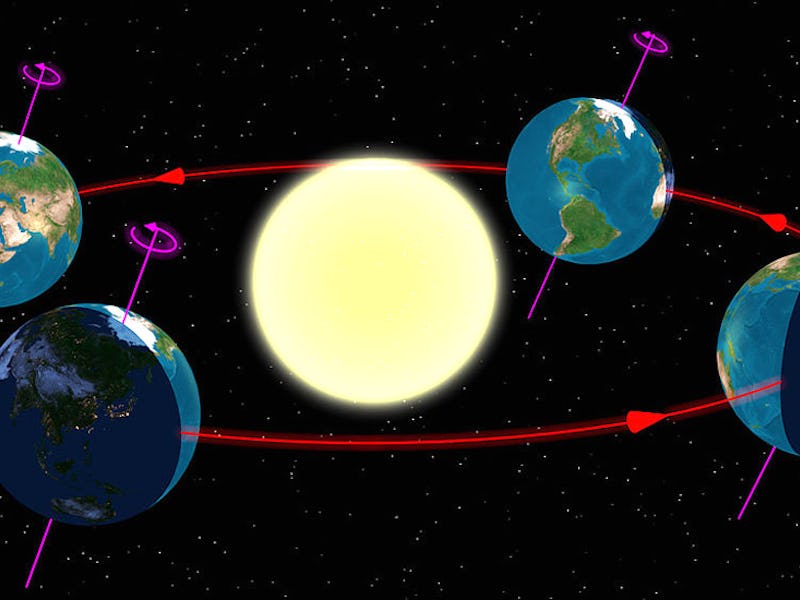Google Doodle: A Wonky Tilt Explains Earth's 2 Summer Seasons
In the Northern Hemisphere, summer has officially begun.

Grab your flower crown and staff because it’s officially summer, baby. On Friday morning, 10,000 people gathered at Stonehenge to greet the Northern Hemisphere’s summer solstice — a tradition that has been kept up for thousands of years. Meanwhile, over at Google, they are celebrating the summer solstice, too, albeit a bit differently — with a fresh doodle.
While on the surface a cartoon of Earth with a bit of sunshine-filled island on its head might not seem to have too much in common with a Neolithic stone structure, they are united in their purpose. Both entities are designed to mark the start of the summer season — the day where, in the Northern Hemisphere, the sun lights up the sky longer than any other day of the year. This happens not because it’s the day when Earth is closest to the sun, but because of the strange tilt of our planet.
Earth’s axis is an imaginary line that crosses through the center of the planet to the poles. Earth makes one complete turn around this line every day, and as it spins, different parts of the planet receive light from the sun. Crucially, Earth is currently tilted on its axis by an average of 23.5 degrees. Earth’s axial tilt oscillates between about 22 to 24.5 degrees on a 40,000-year cycle. According to NASA, studies show that when Earth is more tilted seasons are more severe.
Friday's Google Doodle for the summer season.
Annually, on June 21, the Earth is tilted in such a way that the sun is directly over the Tropic of Cancer at 23.5 degrees latitude — causing the Northern Hemisphere to be in a more direct path of the sun’s energy. Less sunlight is scattered before it reaches the ground because there’s less distance to travel through the atmosphere, making the days warmer, and the sun’s high angle produces longer days.
In turn, this means that in the Southern Hemisphere the opposite is happening. There, it is the first day of winter. The low sun angle produces shorter days, and the sun’s energy is scattered before reaching the ground. That part of the world is “leaning” away from the sun, and it will be that way until about September 23, when the Earth will be at a perfect 90 degree angle from the sun. That day, the spring equinox for the Southern Hemisphere corresponds with the fall equinox in the Northern Hemisphere.
Earth exists on a tilt.
It’s hypothesized that Earth exists on its tilt because about 4.5 billion years ago it violently collided with a “planetary embryo” called Theia. Theia didn’t survive the crash — although scientists think that large parts of the moon and Earth are made up from it — and Earth was knocked off-kilter.
But the angle used to be more severe — as great as 55 degrees — and scientists are still working to understand why that changed and how incremental adjustments changed the planet’s environment. Meanwhile, the planet’s spin axis continues to change, a process that’s likely driven by climate change and melting ice. How a changing tilt will affect future summers remains to be determined.